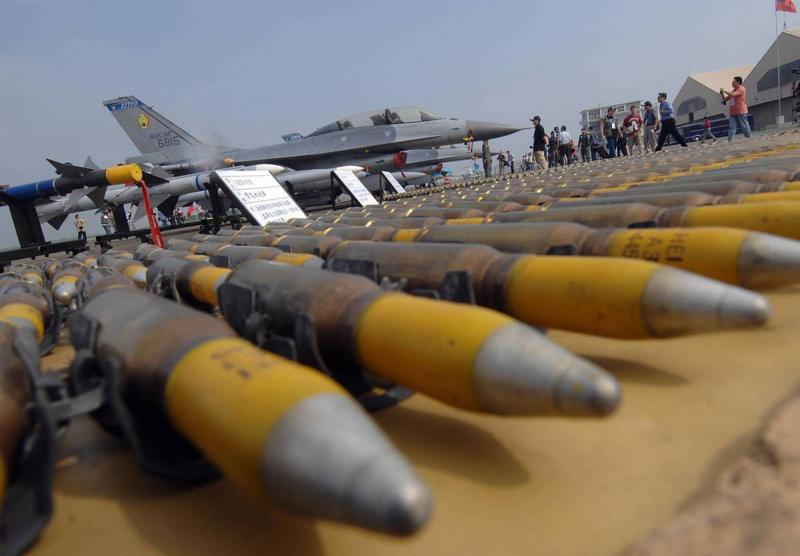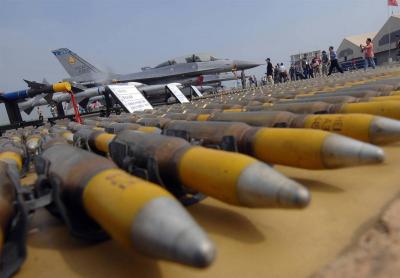Despite the significant disparity in military strength between Israel and Hamas, which controls the Gaza Strip, the surprise attack "Al-Aqsa Flood" executed by Hamas on Saturday, October 7, revealed a good level of armament and training, with observers noting the emergence of advanced weapons in the hands of Hamas.
#### Hamas's Weapons
During the "Al-Aqsa Flood" operation, Hamas unveiled new qualitative weapons that surprised everyone, including the Israelis themselves. These included locally-made drones and gliders that transported Hamas fighters up to 25 kilometers inside Israeli towns, incendiary bombs that destroyed Israeli vehicles and tanks, as well as new long-range missiles that reached Tel Aviv, and a locally-made air defense system called "Matbar 1." There have been many questions about how the group obtained and developed these weapons and trained with them despite being besieged in an area of only 350 square kilometers under tight Israeli surveillance and maritime, aerial, and land blockade.
Ali Baraka, the head of Hamas's international relations, stated, "We have local factories for everything: missiles with ranges of 250 km, 160 km, 80 km, and 10 km. We have factories for mortars and their shells." He added, "We have factories for Kalashnikovs and their ammunition. We manufacture bullets in Gaza." Photos circulated from the "Al-Aqsa Flood" operation showed both old and advanced weapons with Hamas fighters, including an old Soviet Dushka machine gun, caliber .50, modified and equipped to fit a small truck operated by one person.
Hamas obtained a supply of these weapons from various sources along with thousands of Russian, Chinese, and even North Korean assault rifles, with arms flowing into Gaza after the fall of Gaddafi’s regime in Libya through smuggling networks, according to previous reports. Hamas also used Russian-made Kornet anti-tank missiles, which proved effective against Israeli Merkava tanks, as well as an anti-tank missile system called BULSAE, effective against Israeli vehicles and armored units, according to American Insider. The site also noted the presence of long-range sniper rifles, such as the Austrian Steyr HS.50, seen with Hamas fighters.
Western reports indicated the use of North Korean-made weapons by Hamas, highlighting one member carrying what appeared to be a North Korean-made missile. A military blogging account, War Noir, identified a rocket launcher carried by one fighter as a North Korean type F-7 HE-Frag. Historically, Palestinians have used North Korean weapons, likely purchased initially by Iran or Syria, and then smuggled into Hamas-controlled Gaza to circumvent the Israeli blockade imposed since 2007.
#### Drones
Drones, whether armed or suicide, were among the surprises shown by Hamas in this confrontation. The group released videos of targeting Israeli soldiers with bombs dropped from local drones, as well as another video targeting machine gun towers at an Israeli site along the border. Major Samir Ragheb, a military expert specializing in armament, stated, "Hamas obtained technology from Iran, and the Palestinian drones of the 'Zouari' type are made from simple metals and fiberglass," which are very inexpensive and made with basic capabilities.
Regarding the engines and complex parts, Ragheb explained that “the motors are very simple and not complex, derived from motorcycle parts or some car spare parts that Israel allows into Gaza.” He added, "For targeting, they depend on simple devices available in markets, some coming from children's toys produced in China and other countries, which are effective in suicide drones that do not require significant advancement."
#### Gliders
Hamas revealed an important qualitative weapon, which is gliders that transported Hamas fighters inside Israeli towns along with weapons and explosives. It is known that such aircraft are not detected by Israeli radars.
#### Missiles
Missiles represent the striking power of Hamas in this war. They managed to employ advanced types such as the "Ayyash 250," which hit long-range targets and reached Tel Aviv, alongside other locally developed systems that caused confusion to Israeli defense systems. Hamas now possesses an advanced missile arsenal, with the Ayyash 250 being the latest addition to their armament, derived from the Iranian Fateh 10 missile but produced with Palestinian expertise, and used to strike the command center of the northern region in Safed.
Hamas has succeeded in developing Qassam missiles, initially with a range of just 19 kilometers, through encounters such as "Cast Lead" in 2009 and subsequent confrontations like Pillar of Defense in 2012 and Guardian of the Walls in 2021, witnessing further advancements in weapon systems. In 2012, Hamas unveiled for the first time a missile capable of striking Tel Aviv, the M-75, followed by the R-160 (renowned as the "Rantisi") with a range of 160 kilometers, and the A-120 (Al-Attar 120). All of this development was assisted by Iran and Hezbollah, with Hamas experts receiving training abroad.
#### Air Defense
Hamas released videos of a "Matbar 1" air defense missile system targeting Israeli aircraft, as well as a group of its members carrying shoulder-launched missiles for air defense and countering Israeli aircraft through missile launches from ground platforms. Experts say that the Matbar 1 system is a version of the Iranian "Shahab Thaqib,” developed based on the Chinese “HQ-7” system; however, Hamas missiles lack any maneuvering wings, which weakens their targeting capabilities. They are primarily intended for helicopters and drones and do not operate effectively against high-speed, elevated targets.
#### Israeli Weapons
Israel deployed all its capabilities in this confrontation, utilizing the latest in its arsenal of bombs, precision missiles, and bunker-buster munitions, which destroyed more than 30,000 homes and residential buildings in Gaza within just five days, according to Palestinian official statistics.
According to the Israeli newspaper Yedioth Ahronoth, Israel used everything at its disposal in the targeted bombardment, including bunker-busting bombs and "Halber" type missiles to strike tunnels, which it received from the United States. For years, the Israeli military has acquired "750 bunker-busting bombs and 3,000 Halber type missiles designated for attack helicopters, along with thousands of GPS-guided bombs aimed at destroying the infrastructure of the Strip, in addition to 50 bunker-busting bombs of the BLU-113 type and 700 others of the BLU-109 type.”
Since Hamas's attack on Israel, the Biden administration announced it was supplying Israel with equipment to convert "dumb" or unguided bombs into precision-guided munitions, in addition to small diameter bombs (SDBs) which experts claim are effective weapons for targeting underground objectives, according to the American newspaper Washington Post. The Washington Post reported that the U.S. administration greenlit the sale of precision-guided weapons to Israel valued at $735 million.
The Israeli military chose to increase its stockpile of American GBU-28 bombs, designed to penetrate fortified targets deep underground, even though these bombs leave massive craters and can inflict devastating civilian casualties. Israel also uses F-35 stealth aircraft, and an Israeli officer told Yedioth Ahronoth that F-35 stealth capabilities were used for the first time in Gaza for intelligence reconnaissance of certain targets, primarily utilized on the northern front and in areas far from Israel's borders.
Despite its advanced technology for detecting Hamas tunnels, the underground network poses serious challenges for the Israeli army. Israel has also utilized smart JDAM bombs, which are heavily employed during its violent raids on Gaza, leaving significant destruction. These JDAM bombs are high-destruction direct attack munitions provided by the United States in support of Israel. JDAM bombs convert unguided bombs into "smart" precision weapons, allowing them to target objectives in Gaza from the air, with a range of up to 28 kilometers, and weights ranging from 558 to 2000 pounds, with the ability to be launched from an altitude of 13.5 kilometers; their targeting is satellite-guided, making them capable of breaching fortifications.
Among the key weapons currently relied upon by Israel, whether in air or ground bombardments or assault operations, are the Merkava tanks, the main battle tank used by the Israeli army, according to the Times of Israel. The newspaper reported that the model favored for deployment in Gaza is the Mark 4, due to its advanced technology, armament, and armor, making it capable of countering Hamas attacks and missile launchers during ground assaults.
Additionally, there are armored personnel carriers (APCs), which are generally lighter than main battle tanks, as well as the new Eitan 8×8 wheeled armored personnel carrier aimed at replacing the older M113 APCs previously used by the Israeli army, according to Army Technology’s blog on X. The Eitan boasts high firepower and mobility capabilities, including across various types of terrain.
Israel also receives military assistance from other Western countries. In Germany, officials have approved the use of two Heron TP drones in Gaza, out of five leased to the country.




